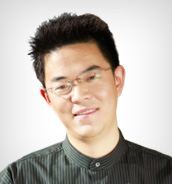Look at the keyboard of any standard typewriter or computer. "Q," "W," "E," "R," "T" and "Y" are the first six letters. Who decided on this arrangement of the letters? And why?
People tried for centuries to invent the typewriter. In 1714 in England, Henry Mill filed a patent for a machine called An Artificial Machine or Method for the Impressing or Transcribing of Letters, Singly or Progressively one after another, as in Writing, whereby all Writing whatsoever may be Engrossed in Paper or Parchment so Neat and Exact as not to be distinguished from Print. That machine probably didn' t sell because no one could remember its name!
The first practical typewriter was patented in the United States in 1868 by Christopher Latham Sholes. His machine was known as the type-writer. It had a movable carriage, a lever for turning paper from line to line, and a keyboard on which the letters were arranged in alphabetical order.
But Sholes had a problem. On his first model, his "ABC" key arrangement caused the keys to jam when the typist worked quickly. Sholes didn' t know how to keep the keys from sticking, so his solution was to keep the typist from typing too fast.Sholes asked his brother-in-law to rearrange the keyboard so that the commonest letters were not so close together and the type bars would come from opposite directions. Thus they would not clash together and jam the machine.The new arrangement was the QWERTY arrangement typists use today. Of course, Sholes claimed that the new arrangement was scientific and would add speed and efficiency. The only efficiency it added was to slow the typist down, since almost any word in the English language required the typist' s fingers to cover more distance on the keyboard.
The advantages of the typewriter outweighed the disadvantages of the keyboard. Typists memorized the crazy letter arrangement, and the typewriter became a huge success. By the time typists had memorized the new arrangement of letters and built their speed, typewriter technology had improved, and the keys didn' t stick as badly as they had at first.
Questions 1 to 5 are based on the passage above.
1.We know from the passage that the inventor of the first practical typewriter is_____.
A.Henry Mill B.Christopher Latham Sholes
C.Sholes'brother-in-law D.Allbert Einstein
2.The author thinks the machine invented by Henry Mill could not be sold because_____.
A.it was difficult for people to accept new things
B.there were great disadvantages of the keyboard
C.the machine could not be distinguished from print
D.the name of the machine was too long
3.Sholes decided the QWERTY arrangement of the keyboard in order to_____.
A.arrange the letters in alphabetical order
B.cause the keys to jam when the typist worked quickly
C.solve the problem of the keys jamming
D.compete with "ABC" key arrangement
4.It is inferred that the QWERTY arrangement of the keyboard_____.
A.is the most scientific arrangement B.adds speed and efficiency of typists
C.keeps the typist from typing too fast D.is easy for typists to memorize
5.Which of the following can be the best title of the passage?
A.The Arrangement of The Letters on Keyboard
B.The Story of Christopher Latham Sholes
C.How to Invent The Typewriter
D.The First Practical Typewriter
文章精要
说明文。本文主要介绍了键盘上QWERTY这种字母排列顺序的来由。
斟词酌句
1.patent n. 专利,专利权
adj. (有关)专利(权)的,受专利保护的
vt. 得到……的专利权
*The government patented the device to its inventor. 政府给予发明者专利权。
2.transcribe vt. 转录;抄写;改编,改写
*He transcribed the poem written by Edgar Allan Poe last night. 他昨晚抄下了埃德加·爱伦·坡的诗。
3.whereby adv. 靠那个,借以
*The law whereby all children receive free education has been passed by the Congress. 国会通过了使用所有儿童享受免费教育的法律。
4.whatsoever adv. (用于否定句中以加强语气)任何
*I have no money whatsoever. 我一点儿钱都没有。
5.lever n. 杠,杠杆;途径,工具,手段
vt. (用杠杆)撬动,撬起
*The worker is levering at the rock. 工人用杠杆移动岩石。
试题精析
1.选B。本题为主要细节正误题。第三段第一句说“The first practical typewriter was patented in the United States in 1868 by Christopher Latham Sholes.”,由此可知,B选项正确。
2.选D。本题为观点态度推断题。第二段最后一句“That machine probably didn't sell because no one could remember its name!”可推知,坐着认为机器可能卖不出去是因为它的名字太长了,没有人能记住。
3.选C。本题为观点态度推断题。从第四段“……his "ABC" key arrangement caused the keys to jam when the typist worked quickly. ”可知,肖尔斯决定“QWERTY”这种排列是为了解决“ABC”键这种排列所引起的“键堵塞”问题。
4.选C。本题为主要细节正误题。从第四段中的“……his solution was to keep the typist from typing too fast.”和“The only efficiency it added was to slow the typist down……”可知,QWERTY排列只能让打字员的打字速度慢下来,C选项与其意思一致。
5.选A。本题为主旨归纳题。第一段的“Who decided on this arrangement of the letters? And why?”是全文的主旨句,文章后面的内容都是围绕这两个问题展开的。
全文翻译
看看任何标准的打字机或计算机的键盘。Q、W、E、R、T和Y是最开始的六个字母。是谁决定的这种字母排列顺序?又是为什么呢?
人们用了几个世纪的时间发明出打字机。1714年在英国,亨利·米尔为一台机器申请专利。这种机器叫誊印字母的人造机器或工具,用它可以像书写一样,一个字母单独写,或数个字母连续写,所有书写内容都可以整洁准确地誊抄在纸张或羊皮纸上,与印刷的不相上下。那种机器可能无人问津,因为没有人记住它的名字。
1868年克里斯托弗·莱瑟姆·肖尔斯在美国为第一台实用的打字机申请专利。他的机器被称为打字机。它有活动的架子,有让打字纸转行的控制杆,还有按字母表顺序排列的键盘。
但是肖尔斯碰到一个问题。在他最初的模型上,他键盘上ABC字母的排列,在打字员快速击键时常常引起键堵塞。肖尔斯想不出如何使各键互不干扰,他的解决办法就是让打字员别打太快。肖尔斯请求他的内兄重排键盘,不要把最常用的字母排得太近,要让打字杆能够朝正反两个方向运动,这样它们就不会碰撞在一起,堵塞机器。新的排列便是打字员今天使用的QWERTY排列。肖尔斯自然声称,新的排列是科学的,能够提高速度和效率。其实它所提高的惟一效率就是让打字速度慢下来,因为不管打英语中哪个词,几乎都需要打字员在键盘上更长地伸展手指。
打字机的利当然是大于键盘的弊。打字员们记住了奇怪的字母排列,打字机一下就获得了巨大的成功。到打字员熟记了字母的新排列,打字速度不断提高,打字机制作技术也有了改进,字母键也不再像最初那样容易撞车了。
相关推荐:英语六级写作经典范文背诵100篇范文录音汇总
更多信息请访问:考试吧四六级栏目
>>>来四六级论坛看看吧
>>>四六级博客圈,你开博了吗?














